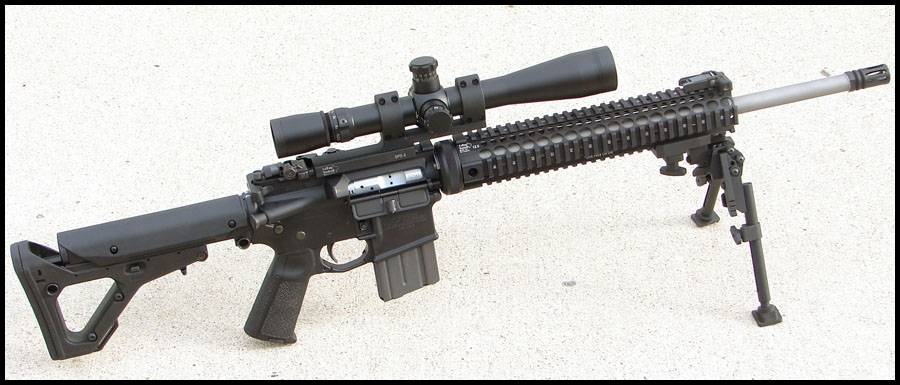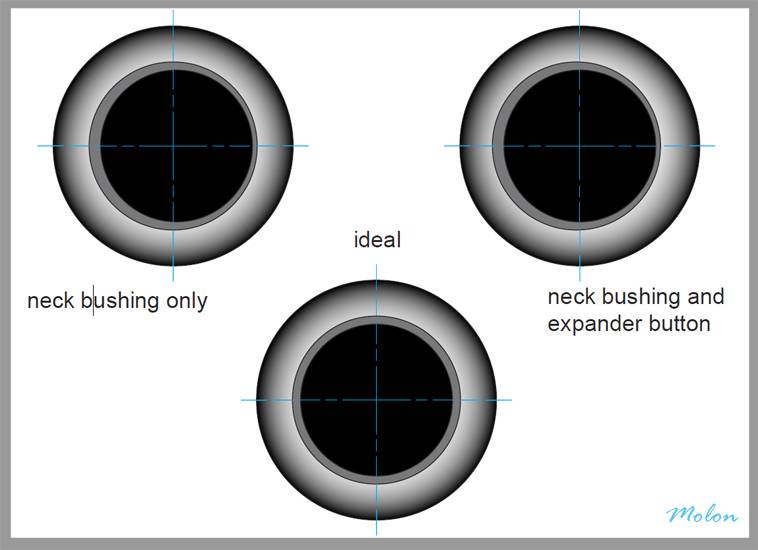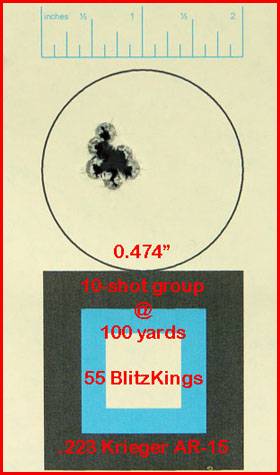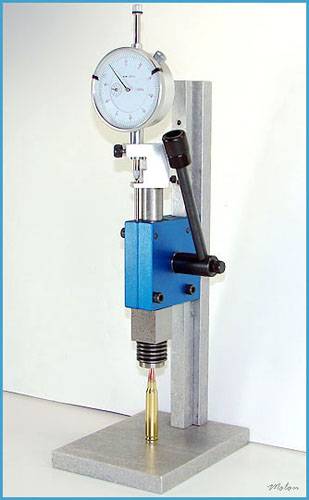Reloading For The AR-15: What You Should Know About Concentricity

Concentric: having a common center. Think of concentricity as
a circle centered within a larger circle. The amount that one circle is
off-center with the other is referred to as “runout” and is usually
measured in thousandths of an inch when pertaining to ammunition.
Why does all this matter? The more concentric, or the less runout that
a loaded round has, the more likely it is to shoot accurately. The bullet
needs to be centered in the case neck and the case neck must be
centered on the case body. This all helps the cartridge align itself in
the chamber of the rifle so that the bullet has a straight shot to enter
the rifling.
Obviously the better the job the seating die does in seating the
bullet squarely in the center of the case neck the more concentric the
round will be. The Forster Ultra Micrometer Bullet Seater Die does a
great job of this by using a sliding sleeve that supports the case while
precisely aligning the bullet for seating. The Redding Competition
Bullet Seating Die works on the same principle and I use both with
outstanding results. Both work equally well in my Dillon XL 650.
Before you can even seat your bullets you have to have a case
in which the neck is centered within the case body. Redding’s Type-S
Bushing Style Dies and Competition Bushing Style Neck Sizing Dies
have worked extremely well for me in achieving concentric case
necks. One area in which I chose to make a compromise pertains to
concentricity of case necks. In order for the dies to be able to
perfectly align the case neck with the case body, the case neck has to
have a perfectly uniform thickness around its circumference. Even
quality 223 Remington cases can come from the factory with at least a
couple of thousandths of an inch of variation in case neck thickness.
To achieve a case neck thickness that does not vary by more than a
few ten-thousandths of an inch, a process known as “neck turning”
can be utilized. Benchrest shooters use this technique to achieve
virtually zero runout in their cases, but it is probably one of the most
time consuming techniques in precision reloading. Since the
chambers on most AR-15s are huge by benchrest standards, I
choose to forgo this step.
Since I do not neck-turn my cases, I do use the expander ball in
my sizing dies. This pushes the variations in case neck thickness
to the outside of the case neck and helps achieve better seated bullet
runout. Remember, with runout “Less is Better”.
The carbide size button (expander ball) of the Redding die floats on
the spindle and works quite well in not pulling the case neck off center
as it exits and expands the case neck. Choosing a bushing diameter that
sizes the case neck down to only a couple of thousandths smaller than
the expanded diameter of the case neck helps the whole process work
more smoothly and probably contributes to case life by not overworking
the brass
Once the bullet is seated, the “seated bullet runout” must be measured using
a concentricity guage. Once again there are several makes on the market. I use
the NECO Concentricity Gauge. When using the gauge I place the center of
the ball of the GEM indicator roughly .050 to .060” ahead of the case mouth.
I consistently achieve an average seated bullet runout of .001” with my reloading
procedures and the 30 round sample that I tested for this portion of this text
had an average runout of only .0008”.
Cases viewed from directly above.

The 10-shot group pictured below was fired from one of my Krieger barreled AR-15s
at a distance of 100 yards using hand-loads that were loaded on my Dillon XL-650
using techniques described above. The group has an extreme spread of 0.474".

....

Concentric: having a common center. Think of concentricity as
a circle centered within a larger circle. The amount that one circle is
off-center with the other is referred to as “runout” and is usually
measured in thousandths of an inch when pertaining to ammunition.
Why does all this matter? The more concentric, or the less runout that
a loaded round has, the more likely it is to shoot accurately. The bullet
needs to be centered in the case neck and the case neck must be
centered on the case body. This all helps the cartridge align itself in
the chamber of the rifle so that the bullet has a straight shot to enter
the rifling.
Obviously the better the job the seating die does in seating the
bullet squarely in the center of the case neck the more concentric the
round will be. The Forster Ultra Micrometer Bullet Seater Die does a
great job of this by using a sliding sleeve that supports the case while
precisely aligning the bullet for seating. The Redding Competition
Bullet Seating Die works on the same principle and I use both with
outstanding results. Both work equally well in my Dillon XL 650.
Before you can even seat your bullets you have to have a case
in which the neck is centered within the case body. Redding’s Type-S
Bushing Style Dies and Competition Bushing Style Neck Sizing Dies
have worked extremely well for me in achieving concentric case
necks. One area in which I chose to make a compromise pertains to
concentricity of case necks. In order for the dies to be able to
perfectly align the case neck with the case body, the case neck has to
have a perfectly uniform thickness around its circumference. Even
quality 223 Remington cases can come from the factory with at least a
couple of thousandths of an inch of variation in case neck thickness.
To achieve a case neck thickness that does not vary by more than a
few ten-thousandths of an inch, a process known as “neck turning”
can be utilized. Benchrest shooters use this technique to achieve
virtually zero runout in their cases, but it is probably one of the most
time consuming techniques in precision reloading. Since the
chambers on most AR-15s are huge by benchrest standards, I
choose to forgo this step.
Since I do not neck-turn my cases, I do use the expander ball in
my sizing dies. This pushes the variations in case neck thickness
to the outside of the case neck and helps achieve better seated bullet
runout. Remember, with runout “Less is Better”.
The carbide size button (expander ball) of the Redding die floats on
the spindle and works quite well in not pulling the case neck off center
as it exits and expands the case neck. Choosing a bushing diameter that
sizes the case neck down to only a couple of thousandths smaller than
the expanded diameter of the case neck helps the whole process work
more smoothly and probably contributes to case life by not overworking
the brass
Once the bullet is seated, the “seated bullet runout” must be measured using
a concentricity guage. Once again there are several makes on the market. I use
the NECO Concentricity Gauge. When using the gauge I place the center of
the ball of the GEM indicator roughly .050 to .060” ahead of the case mouth.
I consistently achieve an average seated bullet runout of .001” with my reloading
procedures and the 30 round sample that I tested for this portion of this text
had an average runout of only .0008”.
Cases viewed from directly above.

The 10-shot group pictured below was fired from one of my Krieger barreled AR-15s
at a distance of 100 yards using hand-loads that were loaded on my Dillon XL-650
using techniques described above. The group has an extreme spread of 0.474".

....




